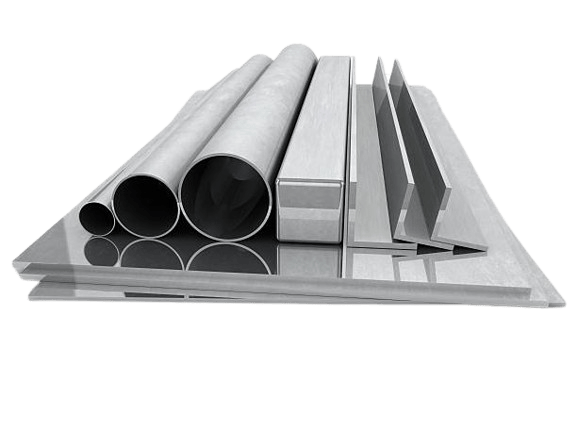When selecting an aluminum window profile and door profile, the multitude of choices can be overwhelming. This blog simplifies the selection process by detailing various aluminum window profiles for easier decision-making.
Why Use Aluminum Profile For Windows And Doors?
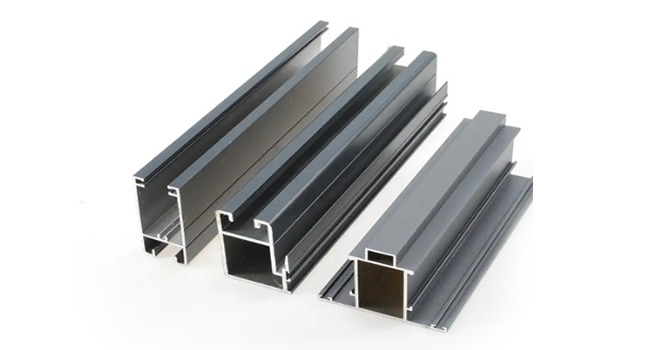
Aluminum profiles for windows and doors offer numerous advantages that make them a popular choice for residential and commercial applications. Here are some key reasons why using aluminum profiles for windows and doors is advantageous:
Durability: Aluminum is a robust material that is resistant to rust, corrosion, and weather damage, ensuring longevity and minimal maintenance requirements.
Strength: Aluminum profiles are strong and can support large glass panes, providing structural integrity and security for windows and doors.
Energy Efficiency: Aluminum profiles can be designed with thermal breaks to enhance insulation, reducing heat transfer and improving energy efficiency in buildings.
Versatility: Aluminum profiles can be customized in various shapes, sizes, and finishes to fit different architectural styles and design preferences.
Low Maintenance: Aluminum profiles are easy to clean and maintain, requiring minimal upkeep to retain their appearance and functionality.
Aluminum Window Profile & Door Profile Types
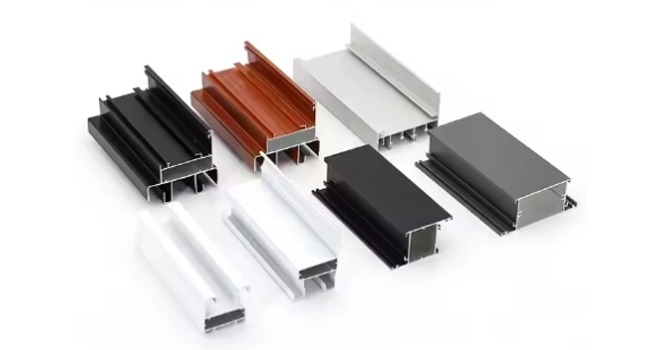
The type of aluminum window profile and door profile offers a range of features and benefits tailored to specific needs:
Aluminum Window Profile
- Sliding Window: Known for its beautiful appearance, large glass area, and flexible use, the sliding window is space-efficient and durable.
- Casement Window: Featuring good ventilation, airtightness, and sound insulation, the casement window provides excellent energy efficiency and security.
- Top-Hung Window: This window prioritizes ventilation and safety, making it a popular choice for various building types.
- Thermal Break Aluminum Window: This type enhances energy efficiency by reducing heat transfer, providing better insulation and comfort.
Aluminum Door Profile
- Flat Door: Offers airtightness, security, and convenience with aluminum alloy material, preventing external elements from entering the building.
- Sliding Door: Known for smooth operation, space efficiency, sound insulation, and enhancing light and transparency within the house.
- Folding Door: Provides a broader view when opened to the side, with features like heat preservation, moisture resistance, fire resistance, noise reduction, and sound insulation.
The Choosing Step Of Aluminum Profile For Window And Door
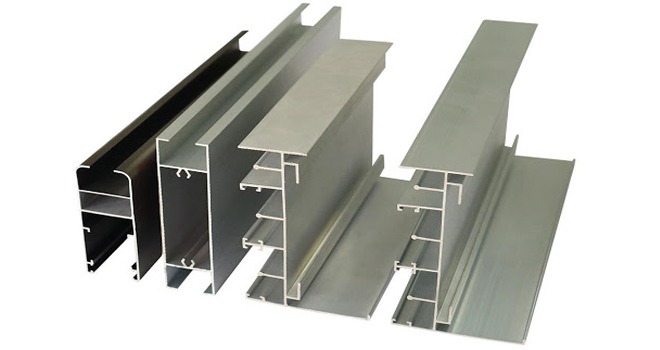
Selecting the appropriate aluminum window profiles and door profiles involves three key steps: firstly, identifying the suitable profile types for your window and door; secondly, selecting the correct aluminum series; and thirdly, choosing the appropriate surface treatment for the profiles.
What Type Of Aluminum Profile Is Suitable For Your Window And Door?
Aluminum Window Profile
In modern residential and commercial spaces, Sliding Aluminum Window Profiles provide a contemporary aesthetic and abundant natural light, ideal for areas with limited space.
For residential homes and office buildings requiring efficient ventilation and enhanced security, Casement Windows excel, particularly in regions with diverse climates where airtightness and noise insulation are essential.
In high-rise buildings, apartments, and hotels, Top-Hung Windows prioritize safety and ventilation, commonly found in bedrooms and living rooms to facilitate fresh air circulation while maintaining security.
Thermal Break Aluminum Window Profiles, suitable for energy-conscious buildings in residential and commercial settings, offer enhanced insulation for temperature regulation, particularly beneficial in regions with extreme temperatures to ensure a comfortable indoor environment.
Aluminum Door Profile
Flat Doors are suited for residential homes, offices, and commercial buildings that prioritize high security and weather resistance, making them ideal for entryways and spaces where privacy and insulation are key concerns.
Sliding Doors are perfect for modern residences, apartments, and commercial environments aiming for seamless indoor-outdoor transitions and efficient space utilization. Widely used for balconies, patios, and room dividers to enhance natural light and airflow.
Folding Doors cater to upscale residences, restaurants, and entertainment venues seeking a versatile and spacious atmosphere. They are ideal for areas requiring expansive openings, such as outdoor dining spaces, conference rooms, and showrooms, where a wide view and weather protection are essential.
Choose The Right Aluminum Grade For Your Profile

An aluminum profile series is crucial in determining the suitability of a window and door:
6000 Series Aluminum Profile
Sliding Window: Opt for a sliding aluminum window profile from the 6000 series like 6061 or 6063 for its strength and versatility, ideal for sliding mechanisms and design adaptability.
Top-Hung Window: A profile from the 6000 series offers a balanced mix of strength and weight efficiency, ensuring durability for a top-hung window without compromising ventilation.
Flat Door: A profile from the 6000 series provides the necessary robustness and corrosion resistance for a flat door, ensuring security and weather durability.
Sliding Door: The 6000 series profile is well-suited for a sliding door, offering a blend of strength and lightness crucial for smooth operation and weather resistance.
Folding Door: Opt for a 6000 series profile for a folding door, as it provides the versatility and strength needed for the folding mechanism and frequent use.
7000 Series Aluminum Profile
- Casement Window: Consider a profile from the 7000 series like 7075 for high strength properties, ideal for a casement window that requires structural integrity and enhanced security.
What Surface Treatment Do You Want?
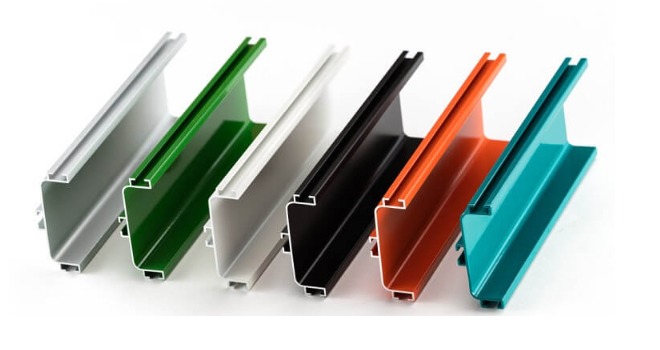
Choosing the surface treatment for aluminum window and door profiles is essential for enhancing their appearance, durability, and functionality. Here are some considerations for selecting the appropriate surface treatment:
Anodizing Aluminum Profile For Window And Door
- Anodizing is beneficial for improving surface hardness and wear resistance of aluminum window profiles.
- Anodized profiles are anti-static, easy to clean, and exhibit excellent heat dissipation properties.
- They offer a beautiful appearance with uniform color that doesn’t fade, enhancing aesthetics.
- Anodizing can enhance the bonding force between organic coatings and inorganic covering layers.
Electrophoretic Spraying
- Electrophoretic paint film provides full, uniform, and smooth coatings with high resistance to corrosion and weathering.
- It offers a more decorative effect compared to spray paint or powder coating, making it popular among customers.
Matte Treatment
- Matte treatment focuses on surface cleaning and can enhance adhesion by increasing surface roughness.
- Matte aluminum door profiles avoid light interference and have a delicate, soft appearance, appealing to customers in architectural decoration.
Powder Coating
- Powder coating involves spraying powder onto the profile surface using electrostatic coating equipment.
- Powder-coated profiles come in various colors with low chances of color differences and good corrosion resistance.
Wood Grain Treatment
- Wood grain transfer technology replicates various wood textures on aluminum window profiles.
- Wood grain transfer printing offers excellent anti-aging, fading, corrosion resistance, and weather resistance..

